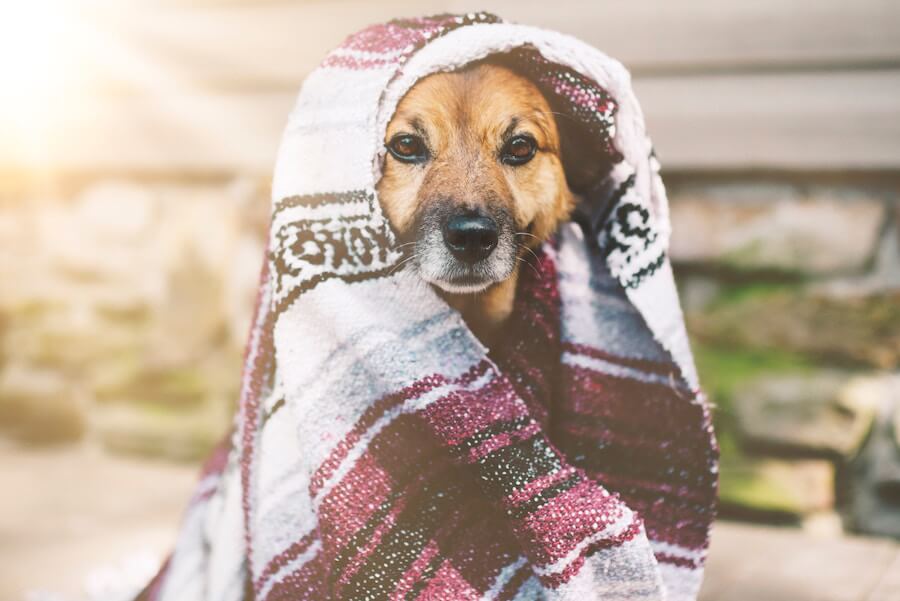First aid for pets is a vital skill for both pet owners and industry professionals to possess. Despite all the planning and know-how, accidents occur. Mistakes will happen. The key is being prepared and having the skills up your sleeve to act quickly and appropriately.
Unfortunately there are myriad instances where pet first aid can come into play. What if a dog you’re clipping falls off the grooming table? What if the dog you walk gets attacked by another canine at the park or the pooch you’re pet sitting suddenly has a seizure?
While scary, these are common scenarios that do happen. Having the skills and knowledge to handle the situation effectively could be the difference between a positive outcome and a more serious ending.
Not to be confused with treatment for specific illness or injury, first aid is help and assistance provided at the scene of an event or injury. First aid bridges the gap between ‘first response’ and ‘professional care’.

Why get pet first aid certification?
Even if you’re just starting your career as a pet professional or have been working in the industry for years, you owe it to your clients, the pets you work with and yourself to get pet first aid certification.
- Gives clients peace of mind when leaving a pet in your care
- Ensures your knowledge of treatment methods and techniques is up to date
- Gives you the confidence and skills to manage a pet emergency or accident
- Sets you apart as a skilled professional
- Shows you take responsibility and pet care serious
- Ultimately, pet first aid adds a valuable addition to your pet care tool kit.
Aside from having pet first aid certification yourself, you can encourage pet owners to gain these essential skills too. After all, there will be times when pet owners need to know and apply basic first aid techniques before taking their pet to get emergency veterinary care.
Pet professionals and pet owners in Victoria can download a free Pet First Aid Guide from the RSPCA Victoria branch.
Who offers pet first aid courses?
The Pet Professional Guild Australia offers an online course, which involves three one-hour recorded webinars, an open-book questionnaire comprising 50 questions plus you’re expected to provide four short 30-second videos to demonstrate hands on competency.
RSPCA New South Wales offers accredited and non-accredited Basic First Aid for Animals courses. The accredited two-day (total of 12 hours) course costs $440 and the non-accredited half-day course costs $165. Both courses are held in Sydney.
Not in Sydney? Contact your local RSPCA branch for courses in your area.
Animal Welfare League also offers a 2.5-hour pet first aid class (cost $60). At the time of writing registrations for this event are closed. However, new dates are likely to be released in the near future.

Bridging the gap—keep a pet first aid kit
Having the necessary resources on hand to offer immediate assistance and care to an injured pet is vital.
In the event of an accident or emergency, having a pet first aid kit at the ready will help stabilise injury and prevent further trauma to the animal.
Essential pet first aid items include:
- Bandages in varying widths
- Gauze swabs
- Non-adherent dressing
- Hypo-allergenic tape
- Saline
- Iodine antiseptic
- Blunt scissors
- Tweezers
- Thermal shock blanket
- Spare towels
- Muzzle
- Gloves
St John’s Ambulance teamed up with the Animal Welfare League to create a St John’s Pet First Aid Kit, which can be ordered (costs $19.95) via the Animal Welfare League
How to handle an injured dog
If you are at the scene on an injury or accident involving a dog, knowing the vital steps to help ensure the animals safety is paramount.
Whether the dog has been hit by a vehicle, mauled by another dog or taken a significant fall, the first steps in pet first aid are to ensure you and the animal are safe from subsequent injury.
The following tips have been adapted from advice provided by US veterinarian Dr Marty Becker.
- Wrap the dog’s body to protect it from struggling and further injury or pain
- Wrap a towel around its neck to help stabilize it and help prevent biting. If you don’t have a towel handy an item of clothing will do.
- If the injured dog is biting, you can make a makeshift muzzle out of a long sock or gauze from an emergency kit.
- If the materials are available, create a makeshift stretcher and slide the dog onto it.
- Cover their eyes. This often has an amazing hypnotic effect.
- Call your vet or the emergency clinic and tell them you’re on the way.
- Stay calm. The more anxiety you show, the more the animal will mirror these feelings. Fear, anxiety and stress amplify pain and can make the medical condition much worse.
He advises that if the dog is bleeding from the skin, apply gentle pressure with a clean towel or an item of clothing.
If the blood is spurting, it is likely that an artery is involved. In this case, pressure should be applied above the wound with a piece of cloth, gauze, a man’s tie, or your hands. If it’s a long trip to the vet’s office the tourniquet may need to be loosened every few minutes to allow blood flow to the limb.
We all know that accidents happen. In the unfortunate event where an animal in your care becomes injured or sick having appropriate insurance (public liability and professional indemnity) can give you peace of mind that you are protected.
Latest posts by Liz Walden (see all)
- Pet health: Medicinal cannabis for pets - December 27, 2021
- What pet business insurance do I need? - November 17, 2021
- Pet sitters: how to take time off - November 15, 2021











Thanks for sharing the blog with an informative content. Keep sharing more.